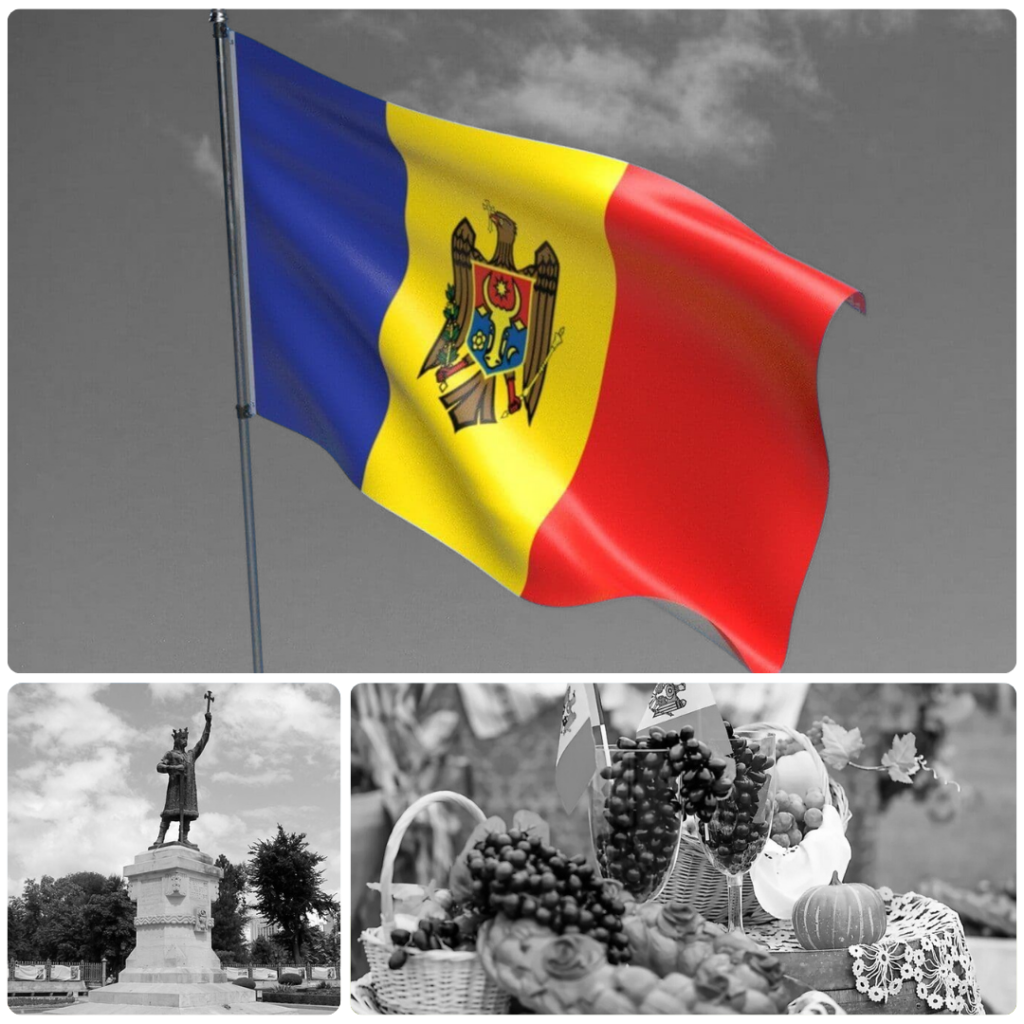About Moldova
A land of rich history, vibrant traditions, and unforgettable flavors

Discover Moldova:
A Land of Hidden Treasures
History
The history of Moldova is a rich tapestry shaped by imperial, royal influences and periods of independence. Once part of the medieval Principality of Moldova, the region has been a strategic hub for trade and cultural exchanges, but also a battleground for conflicts. Due to its geopolitical position, Moldova has been under Ottoman, Russian, and Soviet rule throughout the centuries, with each domination leaving its mark on the local population.
A historic landmark is the reign of Stephen the Great, the legendary 15th-century ruler of Moldova. It is said that after each victory, he would build a church, turning Moldova into a land of monasteries, symbols of faith and perseverance. Moldova also has a strong wine-making tradition. During World War II, the country’s underground cellars were so well hidden that Nazi troops failed to discover them. Today, famous wineries such as Mileștii Mici, Cricova, and Purcari are internationally recognized, solidifying Moldova’s reputation as a producer of exceptional wines.
Independence, gained in 1991, marked a new chapter for Moldova, which aspires to join the European family, in line with its historical origins. The ancient traditions of this region are still alive and deeply rooted in the culture and daily life of the Moldovan people.
Geography
Situated between Romania and Ukraine, Moldova is a country whose natural beauty makes it particularly attractive. Green hills, sunflower fields, and the Nistru and Prut rivers traverse the country, offering breathtaking landscapes. Orheiul Vechi, an archaeological and spiritual complex set on limestone cliffs above the Răut River, is one of the most remarkable sites in Moldova. Visiting this place transports you to another era. Also, the geographical center of Moldova is marked by the city of Orhei, symbolizing the perfect balance between nature and history.
Culture
Moldova’s cultural heritage is an integral part of Europe’s legacy. Its traditions reflect a harmonious blend of influences, with Romanian elements prevailing, while echoes of Russian and Ukrainian cultures have also left visible traces. Music and dance play a fundamental role in daily life, and the hora, a traditional circle dance, is a staple at every celebration. Moldovans also take great pride in their embroidery, a craft passed down through generations, while traditional costumes tell stories of nature and cultural heritage.
The Republic of Moldova is proud of its series of world-renowned personalities.
Eugen Doga, considered a titan of classical music, represents a symbol of talent and excellence. Awarded the UNESCO Honorary Diploma, Doga is recognized as one of the most influential composers in Eastern Europe. His famous waltzes, “Dulcea și tandra mea fiară” and “Gramafon,” are among the top 200 classical pieces, leaving an indelible mark on music history.
Maria Bieșu, one of the greatest sopranos of the 20th century, enchanted international audiences with her flawless voice and unique charisma. With numerous accolades and performances on the most prestigious stages of the world, such as the Paris Opera, La Scala in Milan, and La Monnaie in Brussels, she remains a legend of classical music.
Emil Loteanu, one of the most renowned directors in world cinema, captivated audiences with his emotionally charged and profound films. He received numerous international awards, including from prestigious film festivals like Cannes and Moscow, and was considered the best film director of the 20th century in Moldova’s cinema.
Gastronomy
Click on the photo for details.
Most dishes are traditional Moldovan, but some carry influences from the Soviet era, incorporating flavors and recipes from other former USSR countries, enriching the culinary diversity.
